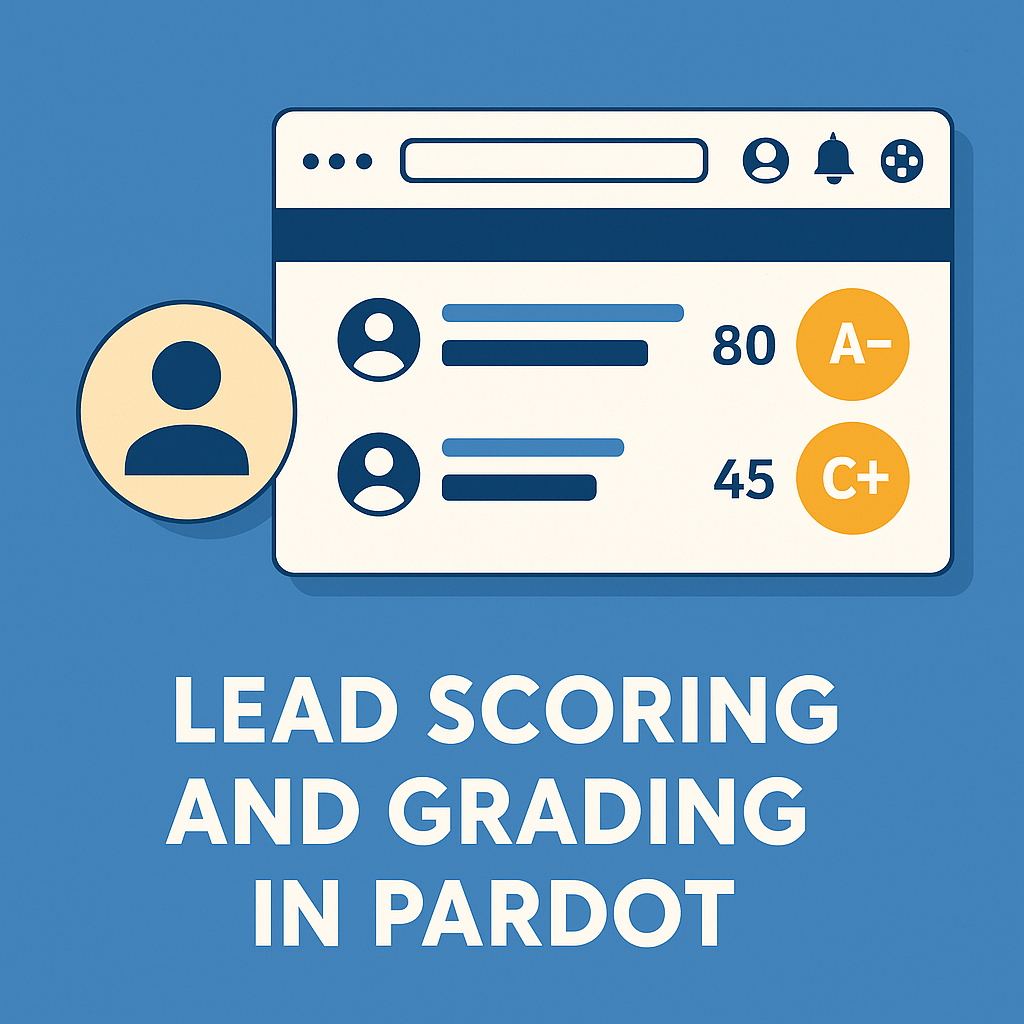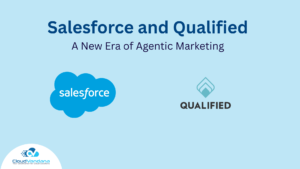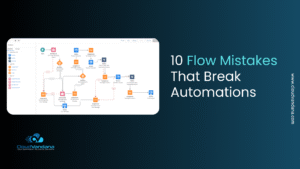Want to implement intelligent lead qualification in Pardot? CloudVandana’s Pardot-certified experts can help you set up, audit, and optimize scoring and grading models tailored to your go-to-market strategy.
Introduction: Why Smarter Lead Qualification is Mission-Critical
In the high-stakes world of B2B marketing, not all leads are created equal. Without a method to evaluate interest and fit, your sales team risks wasting time on poor prospects while high-quality leads fall through the cracks. Pardot (now Marketing Cloud Account Engagement) offers two robust tools—lead scoring and lead grading—that allow marketers to prioritize the right leads for the right conversations.
Table of Contents
- Want to implement intelligent lead qualification in Pardot? CloudVandana’s Pardot-certified experts can help you set up, audit, and optimize scoring and grading models tailored to your go-to-market strategy.
- Introduction: Why Smarter Lead Qualification is Mission-Critical
- Understanding the Difference Between Scoring and Grading
- Setting Up Lead Scoring in Pardot
- Implementing Lead Grading in Pardot
- Real-World Examples of Scoring + Grading in Action
- Automating the Journey Based on Score + Grade
- Reporting and Optimization
- Common Mistakes and How to Avoid Them
- Advanced Use Cases and Best Practices
- The Strategic Value of Lead Scoring and Grading
- Conclusion: Data-Driven Lead Qualification Isn’t Optional
- Frequently Asked Questions
- YOU MIGHT ALSO LIKE
Understanding the Difference Between Scoring and Grading
What Is Lead Scoring?
Lead scoring assigns points based on a prospect’s behaviors—such as email opens, clicks, page views, form submissions—that indicate interest or engagement.
What Is Lead Grading?
Lead grading evaluates how closely a prospect matches your ideal customer profile based on explicit attributes like job title, industry, company size, or location.

Why You Need Both
Scoring and grading are complementary. A highly engaged but poorly matched lead (high score, low grade) is less valuable than a moderately engaged perfect-fit lead (moderate score, high grade).
Setting Up Lead Scoring in Pardot
Default Pardot Scoring Model
Out of the box, Pardot assigns points for basic actions: 50 for form completion, 10 for email click, etc.
Customizing Scoring Rules
Admins can adjust scores to align with your funnel velocity. Give higher weight to pricing page views, demo requests, or specific content downloads.
Using Score Degradation
Reduce scores for leads that haven’t engaged recently. This keeps your database fresh and signals waning interest.
Triggering Score Threshold Actions
Use automation rules to notify reps or assign leads to queues when a lead hits a certain score.
Implementing Lead Grading in Pardot
Grading Based on ICP Criteria
Assign grades (A+ to F) based on key fit attributes—company size, location, job level, industry match.
Creating Grading Profiles
Define multiple grading profiles if you sell to different personas. For instance, a CMO and a Director of IT may have different ideal criteria.
Profile Rules and Adjustments
Each match increases the grade by 1/3 of a letter; mismatches can decrease the grade. Configure these under Automation > Profiles.
Syncing Grading with CRM Data
Use CRM fields to automatically adjust grades. For example, when a prospect’s title includes “VP,” boost their grade.
Real-World Examples of Scoring + Grading in Action
Example 1: Content-Engaged but Poor Fit
A freelancer downloads five whitepapers and attends a webinar. High score, but they’re not your buyer persona. Grade = D.
Example 2: Low Score, Perfect Profile
A CFO visits one pricing page. Low score, but Grade = A. Worth a sales outreach.
Example 3: High Score, High Grade
An enterprise CIO requests a demo after visiting multiple high-value pages. High score + Grade A. Fast-track this lead to sales.
Automating the Journey Based on Score + Grade
Progressive Profiling to Fill Data Gaps
As leads interact with more forms, collect additional info to complete the profile for accurate grading.
Dynamic List Segmentation
Build lists like “High Score + Grade A” for targeted nurturing or SDR outreach.
Lead Assignment Rules
Assign leads with Grade B and above to sales. Keep lower grades in marketing nurture.
Campaign Personalization
Personalize email content based on fit and engagement level.
Reporting and Optimization
Pardot Reports for Score/Grade Trends
Analyze which behaviors drive the highest scores and which attributes correlate with high conversions.
Aligning Score + Grade with Pipeline Metrics
Track close rates by lead score/grade combinations to refine scoring models.
A/B Testing Score Thresholds
Adjust scoring rules and test impact on MQL quality and velocity.
Common Mistakes and How to Avoid Them
Overvaluing Vanity Metrics
Clicks don’t always equal intent. Use deeper behaviors (pricing page, ROI calculator) for better signals.
Neglecting Grade Calibration
Your ICP evolves. Revisit grading criteria quarterly to reflect new segments or priorities.
Failing to Align Sales and Marketing
Ensure sales reps understand how score and grade work so they can prioritize appropriately.
Advanced Use Cases and Best Practices
Account-Based Scoring Models
Roll up scores across multiple contacts at an account to inform ABM strategies.
Integrating with Salesforce Campaign Influence
See how scoring/graded leads contribute to campaign-attributed revenue.
Syncing with Sales Cloud Einstein
Use Pardot scores and grades to influence lead conversion likelihood in Einstein Lead Scoring.
Using Scoring Categories
Segment scores by product line or region for multi-solution go-to-market models.
The Strategic Value of Lead Scoring and Grading
Better Alignment, Faster Conversions
Scoring and grading get marketing and sales aligned on quality, not just quantity.
Predictive Funnel Management
Identify bottlenecks by observing score/grade drop-offs across funnel stages.
Intelligent Budget Allocation
Shift spend to the sources that deliver Grade A leads with high scores—and better conversion outcomes.
Conclusion: Data-Driven Lead Qualification Isn’t Optional
Lead scoring and grading in Pardot aren’t just features—they’re foundational to running a mature, scalable B2B marketing engine. When tuned correctly, they help marketers stop guessing and start prioritizing, and help sales teams spend more time with the leads most likely to close.
Want to implement intelligent lead qualification in Pardot? CloudVandana’s Pardot-certified experts can help you set up, audit, and optimize scoring and grading models tailored to your go-to-market strategy. Contact us today.
Frequently Asked Questions
1. What’s the difference between lead scoring and grading in Pardot?
Lead scoring measures a prospect’s level of engagement based on their actions, like email clicks or form submissions. Lead grading evaluates how well a prospect fits your ideal customer profile based on attributes like industry, job title, and company size.
2. Can I automate lead assignment based on score and grade?
Yes. Pardot allows you to create automation rules or assignment triggers that route leads to specific reps or queues when they reach a defined score or grade threshold. This ensures high-quality leads are prioritized promptly.
3. How often should I revisit my lead scoring and grading model?
Best practice is to audit your models quarterly or whenever your ICP (ideal customer profile), product positioning, or buyer behaviors evolve. Regular adjustments keep your qualification framework aligned with market realities.
















